“So what do you think, David? High or low?” asked Oliver White, Abaco Lodge fishing manager. I looked behind me and waited for a response from our guide, David Tate. With his eyes intently fixed on the expansive flat in front of him, the reserved Bahamian replied, “Tings be looking good — I bet low.” White, now staring down at his watch, answered, “Starting now!”
With a hunch the two weren’t referring to the tide, I asked what they meant by high or low. White explained that guides and clients sometimes play this game in the Marls of Abaco. Betting high means that 90 seconds or more will pass between your last and next shot at a bonefish. Betting low means it will be less than 90 seconds before you have another chance.
By the time White was finished with his 30-second explanation of how to play High Low, we both heard Tate telling us he had a pod of bonefish in his cross hairs 60 feet away at 2 o’clock from the bow. White quickly turned, made a cast in front of the small group of fish, crouched down, stripped twice and came tight to a silvery bone.
If playing this game in other bonefish destinations, betting men would likely put their money on high most of the time. However, White and Tate proved over and over again that if you’re fishing the Marls of Abaco, guessing low is actually the safer gamble.
Abaco Enlightenment
Lucayans were the original occupants of Abaco. In the late 1700s, Loyalists escaping the American Revolution made places like Cherokee Sound, Elbow Cay and Carleton Point their home. The residents of the Abacos mostly made their living either as boatbuilders or farmers. As the world’s clock ticked on, many foreigners began recognizing the natural beauty of the island, and it wasn’t long before towns like Marsh Harbour and Treasure Cay were regularly unloading small planes full of travelers seeking an exotic vacation. Once bonefishing’s popularity spread from Andros, fly-anglers began accompanying the tourists on these small planes. Though much of Abaco has changed since those early days of exploration, the types of travelers the island sees have not.
Once your toes land on Abaco sand, you’d be hard-pressed to find a person there who isn’t ready for a little R&R, a cold Kalik and perhaps a little bonefishing. As I stepped outside of the Marsh Harbour airport into the warm sun, I noticed my unmistakable shuttle service — an old tan single-cab pickup truck with a German shepherd standing in the bed and a bright blue Hell’s Bay skiff in tow. In the cab were White and Tate.
After hellos and nice to meet yous, White asked, “You ready to fish?” Twenty minutes later, the skiff was splashed; the guide, gear and German shepherd were loaded; and we were on our way to the flats.
As we fished that afternoon, White asked what exactly I was hoping to do during my stay. My goal for the trip was simple — catch as many bones as possible and hopefully land a couple of big ones. White smiled and said that we could do just that, or if I was up for it, we could explore a little and try to capitalize on other options available around the island. I was puzzled — I always thought of Abaco as a one-trick pony as far as fly-fishing was concerned. I figured the game plan would be simply to fish the Marls every day and cast to tailing bonefish. But always up for something new, I asked White what other options there were. As he stood on the bow waiting for his next opportunity, he enlightened me. The quality of fishing in the Marls is so good that anglers and guides often use it as a sure bet, but anglers willing to roll the dice and leave the Marls can potentially catch permit, tarpon, sharks and even dolphin. Right as White finished educating me about the diversity of Abaco, Tate, who had been silently poling along the flat, called out: “Point your rod left, more left — right there!” As White made his delivery, he said, “Add fishing for mutton snapper on the flats to that list of diversity.” I’ve heard claims like this before, but I would soon find that Abaco truly is a land of fly-fishing opportunity.
More Than Bones
Back at the lodge, I immediately feel right at home. After a few snacks and beverages, followed by an amazing dinner, White, the other lodge guests and I gathered around a fire pit overlooking the Marls. Moments like this make me thankful that I put in the time to learn to fly-fish. Though all of us were strangers, we had a common bond and discussed fly-fishing for bonefish like we’d known each other since elementary school. As the fire dwindled to embers, White asked if I’d be up for making a longer run to Moore’s Island the following morning to look for big bones and permit. I was interested but a bit skeptical. I had never thought of the Bahamas as a permit destination, but curiosity got the best of me, and I eventually made my way back to my room to rig leaders just in case.
In the morning, Tate and I met up with Clint Kemp, manager of Black Fly Lodge. Kemp is a native Bahamian and has a real permit tooth. In a matter of minutes, we were aboard his skiff and on a course to Moore’s, approximately a 28-mile run. When we reached the island, I couldn’t help but think of how much it reminded me of the Florida Keys. With each thrust of Kemp’s push pole, I could hear the faint crunch of hard bottom that permit like so much. Since this fishing is feast or famine, I knew that should we encounter a permit, the pressure would be on. So to better our odds, I decided to let Tate take the rod instead of his usual push pole.
After a couple of hours, my confidence was sinking. All was quiet, and I figured it was only a matter time before our guide suggested we change things up a bit — but then it happened. Kemp whispered to Tate that he had three permit just out of range. Tate’s body language immediately perked up, and he methodically checked his line on the deck, examined his fly and scanned the crystal-clear water until he too caught sight of them. Tate’s first cast was right on the money, but it didn’t draw a strike. Two more casts, and still nothing. “I think we’ve got one more shot at these fish before they get too shallow, so give me a second to give you an optimal shot,” Kemp said. He skillfully positioned the boat, and Tate reared back and made a final cast that landed just short. He picked up and made a water haul that put the fly about a foot in front of the lead fish. After the fly sank and settled, Tate gave the crab imitation a slow 12-inch strip, and we all watched as the permit flared its gills and sucked in the fly. Tate went to strip-strike but missed the fly line, and his prize went free.
Tate, an amazing angler and even more amazing guide, simply got caught up in the excitement — extremely easy to do when making a presentation to a permit. Though we didn’t get that fish, I felt I’d witnessed something special. Tate was upset with himself, but the look in his eyes and the smile on his face proved that he enjoyed having been a part of a scenario all fly-fishermen dream about.
Playing Hooky
Upon our return, we reported to White how close we had been to catching a permit. That was all he needed to hear to postpone his daily tasks as lodge manager and join us the following day at Moore’s. We started early the next morning, and Coco McKinney, a young Crooked Island native and our guide for the day, pointed his skiff toward Moore’s and jumped it on plane. While searching for permit, we came across several schools of bones that were willing eaters. After releasing a couple, we decided to go for broke and search for permit once again. McKinney poled us onto a huge flat of hard-packed white sand surrounded by turtle grass. “Look way out at the very edge of the flat, 60 yards away,” he said. “I see something — I don’t know what it is, but it’s something.” As we came closer, I caught a glimpse of a broad fish weaving along the edge of the sand and grass. I pointed it out to White, who then made a perfect 80-foot cast, landing the Kung Fu crab just in front of the fish. It didn’t turn on or spook. It just lazily swam right by. We chased this fish for another 20 minutes, and it passed on every offering. After it was finally out of range, White abandoned his game face, turned, smiled and said, “I don’t care how many permit you throw at: It’s going to be awesome, and it’s going to make you nervous.”
It was getting late, and White suggested we chase blacktip and lemon sharks on a nearby flat notorious for harboring them to get a solid bend in a rod. We quickly managed to catch a small barracuda, which McKinney rigged on a rope and hung from the bow of the skiff. Literally seconds later, we were absolutely surrounded by lemons, bulls and blacktips. It was a scene straight from National Geographic’s Shark Week. We had a blast teasing them in and performing bait-and-switch after bait-and-switch. We managed to bring a few to the boat and broke two rods before we decided to leave the frenzy and head back to the lodge. Unfortunately, permit eluded us once again, but we were all thankful to have had legitimate shots two days in a row.
Action in the Marls
With only one day of fishing left, I sheepishly requested to fish the Marls. The diversity of the fishing I had already experienced was proof enough for me that Abaco has it all. As much as I would have liked to look for permit again or maybe even resident tarpon, I couldn’t have lived with myself if I knew I’d fished Abaco without even making a cast in the Marls. It seriously is bonefishing at its finest.
You can count the minutes it takes to get from Abaco Lodge to the Marls on one hand. On our way out, Tate and White said that oftentimes they leave the dock, start casting with the lodge in view and fish the entire day without losing sight of it. When you are in the Marls, it’s almost as if there are fish around every corner, bend, pool and shoreline. All the textbook bonefishing situations you read about can be found on a regular basis in this 200-square-mile stretch. The problem quickly becomes which fish to throw at. We caught bonefish after bonefish. Just listening to the stories Tate and White told of some of the big fish they’d encountered in the Marls over the years was incredible. And one of the largest bonefish ever caught in the Bahamas was taken only minutes away from the lodge.
So as it turns out, we could have easily stuck to the original plan of scouring the Marls for three days. Who knows? If I had, maybe I could have scored a little cash playing High Low. We’d surely have caught more fish, but I would have been completely deprived of all the hidden gems lying just off the mainland.
As we came back to the dock after an epic day of bonefishing, I was sad in a sense. This particular lodge is tough to leave, and after making one trip, you’ll likely mark return dates on your calendar for years to come. You may arrive and not know a soul, but after four or five days of dining, sipping cocktails around a fire and sharing fish stories, you will have made at least a couple of new friends.
Getting There, Doing That
One of the best parts about Abaco is that it’s not a headache to get to. Many commercial airlines fly right to Marsh Harbour or Treasure Cay. If you have the option, the former is actually closer to Abaco Lodge, but it’s very easy to be transported from Treasure Cay. If you can get to Miami, Fort Lauderdale, West Palm Beach, Melbourne or Daytona, all in Florida, I highly recommend AirGate Aviation. The airports the company flies out of are very small, making it easy for you to focus on your trip instead of waiting in a busy check-in or security line.
Once you reach Abaco, you have several options for fishing and lodging. During this trip, I stayed at Abaco Lodge and also visited Black Fly Lodge. At either one, you will be perfectly comfortable in the confines of the property, but if you’d like a brief change of scenery, you can easily head to Marsh Harbour and find great restaurants, bars and even a little night life. For a listing of agents who can handle all of your Abaco logistics, visit flyfishinsalt.com/agents.
Abaco Contacts
Black Fly Lodge
877-260-4332
blackflylodge.com
AirGate Aviation
407-585-3545
airgateaviation.com
Abaco Lodge
307-200-1747
theabacolodge.com
Big Apple to Bahamas
How does a University of North Carolina graduate with a degree in philosophy end up working as a hedge fund analyst in New York City? By having a background in fly-fishing, of course!
While in college, Oliver White began his fly-fishing career as many do, guiding in his free time. After graduating, he took over a family-run guide service doing a lot of business in western North Carolina, eastern Tennessee and Alaska. Eventually he branched out and began hosting trips internationally in locations such as the Bahamas, Iceland, Russia and Argentina, to name a few.
While fishing in South America’s Tierra del Fuego, White established a bond with a client. Throughout the week, the client quizzed 24-year-old White on what he wanted to do with the rest of his life. Months later, when White returned home to Jackson Hole, Wyoming, he found a box full of books and a note that said, “Read these and give me a call.” That summer, White guided and read. At the end of the season, he packed his bags for New York and started working at Pershing Square Capital Management. His client became his boss.
Though White was the only analyst at PSCM without a Master of Business Administration from an Ivy League school, he achieved great success, working hard and learning a lot over the course of two years. But White missed the fly-fishing lifestyle and was ready to pursue a new career in lodge management. Right off the bat, White set his sights on the Bahamas, and when he saw the plot of land where Abaco Lodge now stands, his mind was made up.
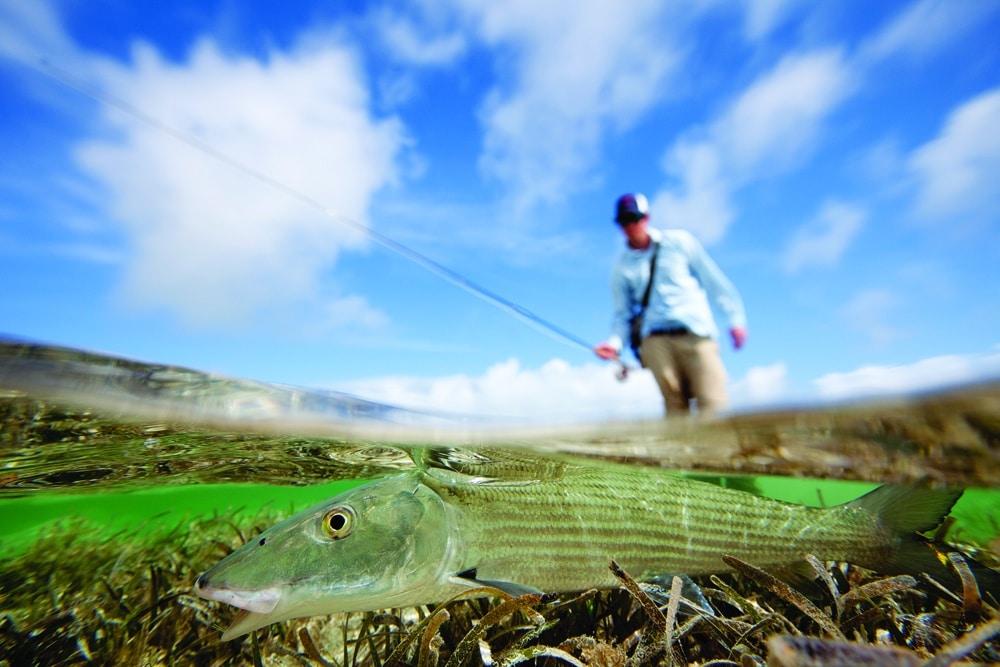
Bonefishing the Marls of Abaco
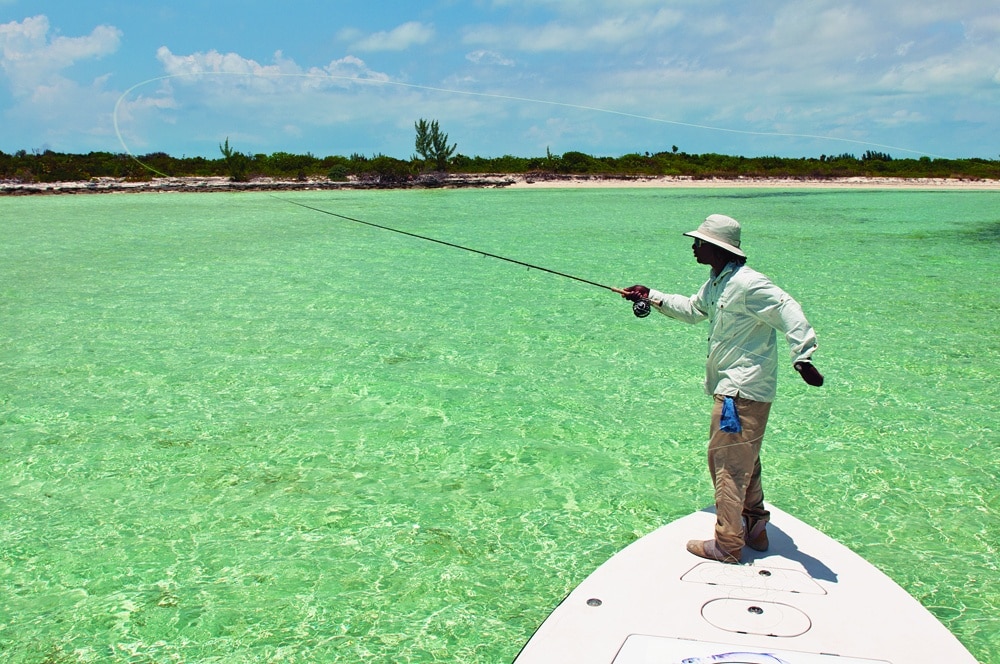
Bonefishing the Marls of Abaco
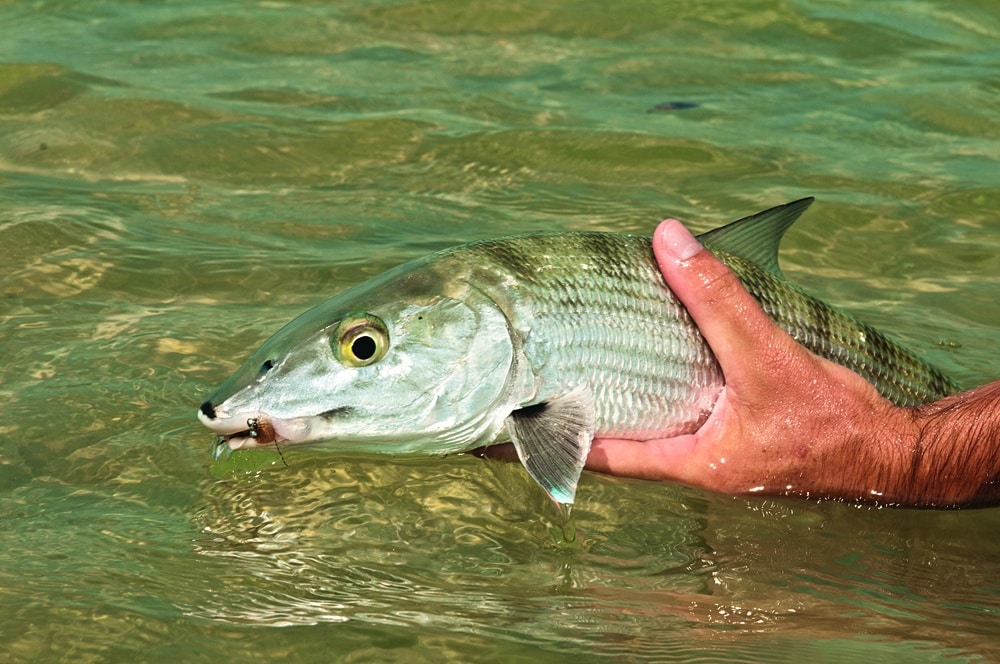
Bonefishing the Marls of Abaco
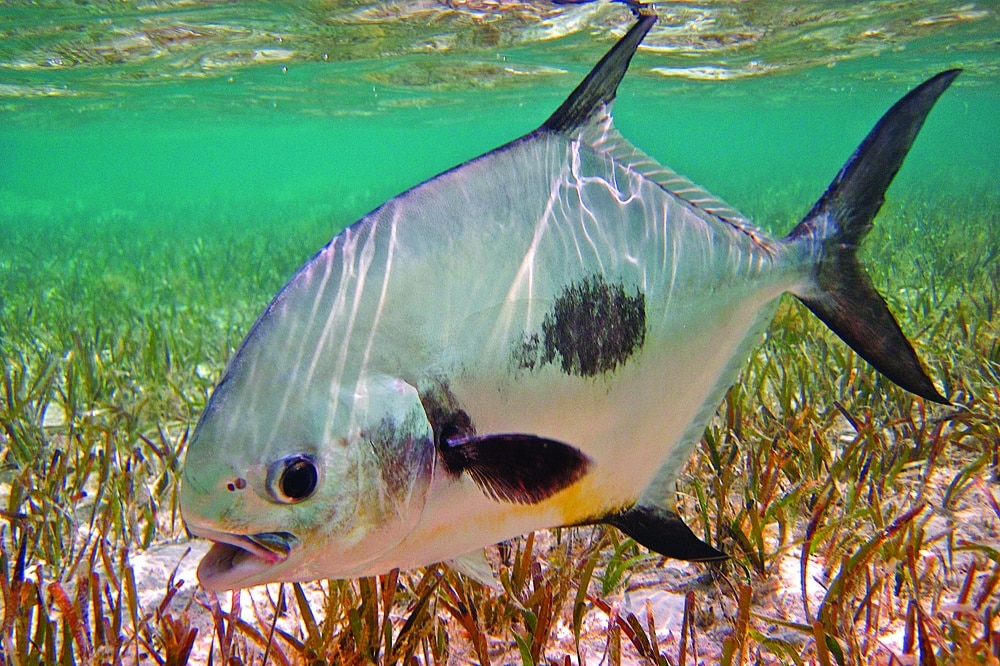
Bonefishing the Marls of Abaco
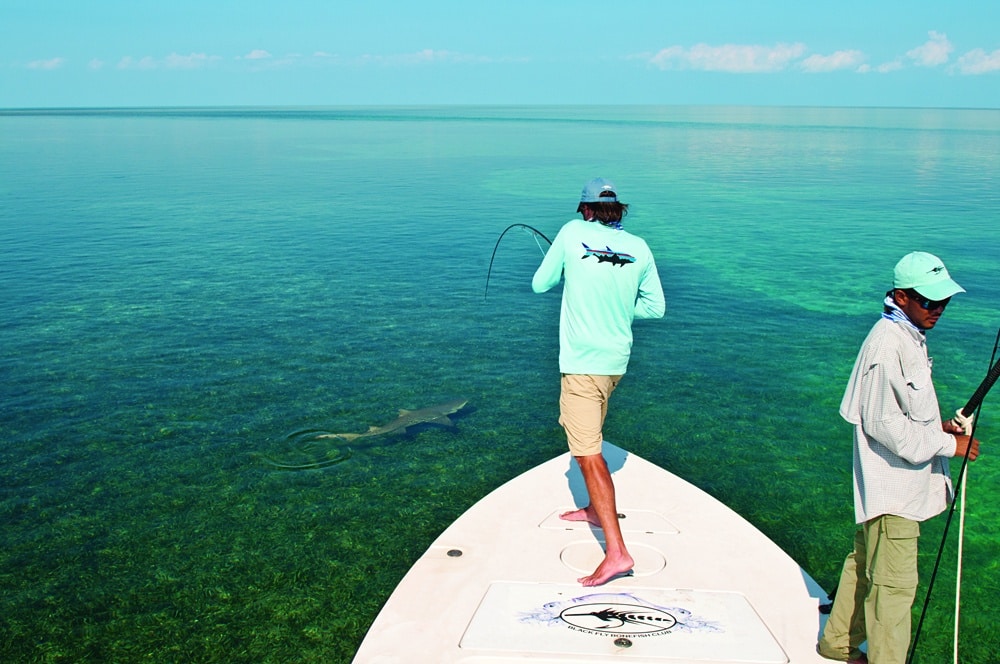
Bonefishing the Marls of Abaco
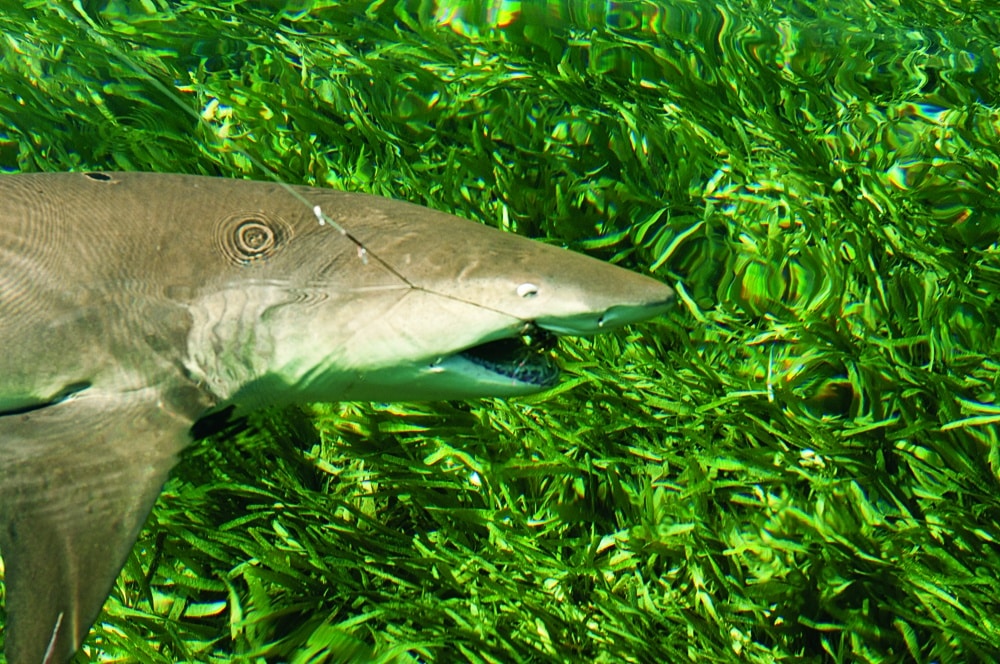
Bonefishing the Marls of Abaco
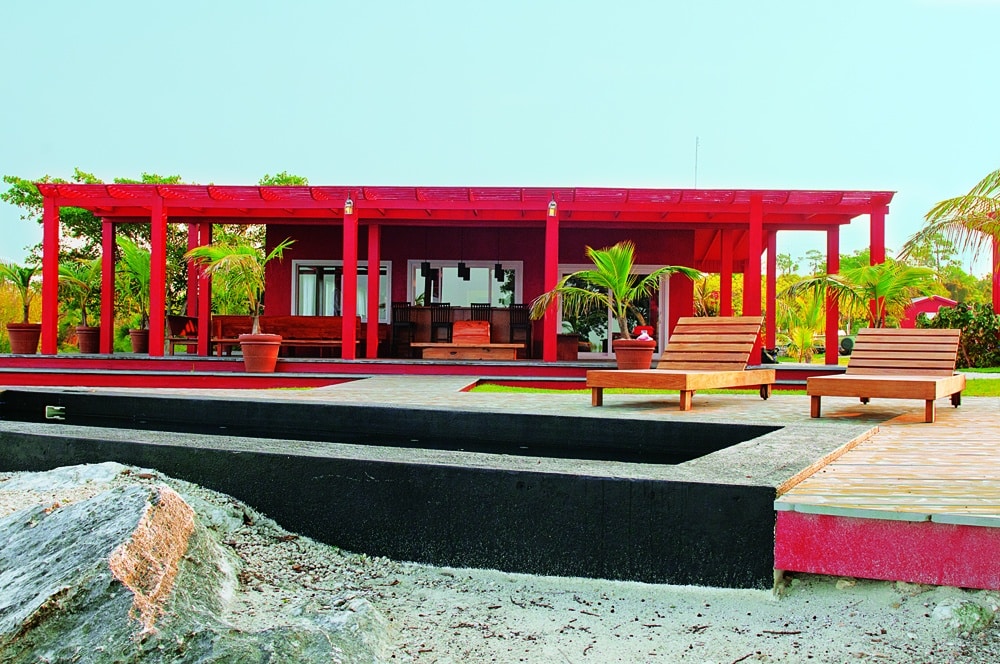
Bonefishing the Marls of Abaco
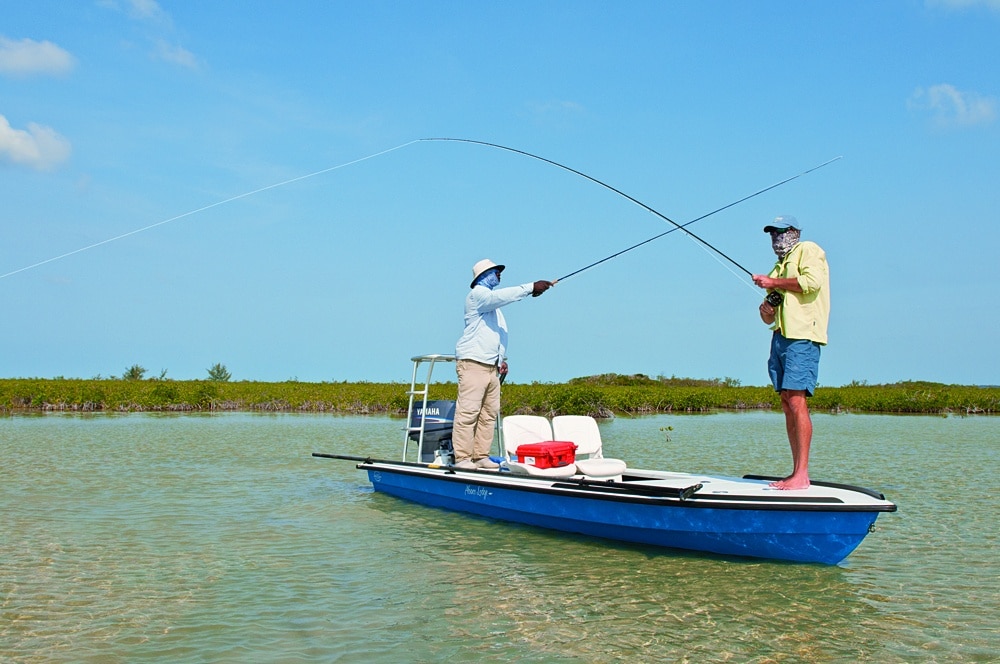
Bonefishing the Marls of Abaco
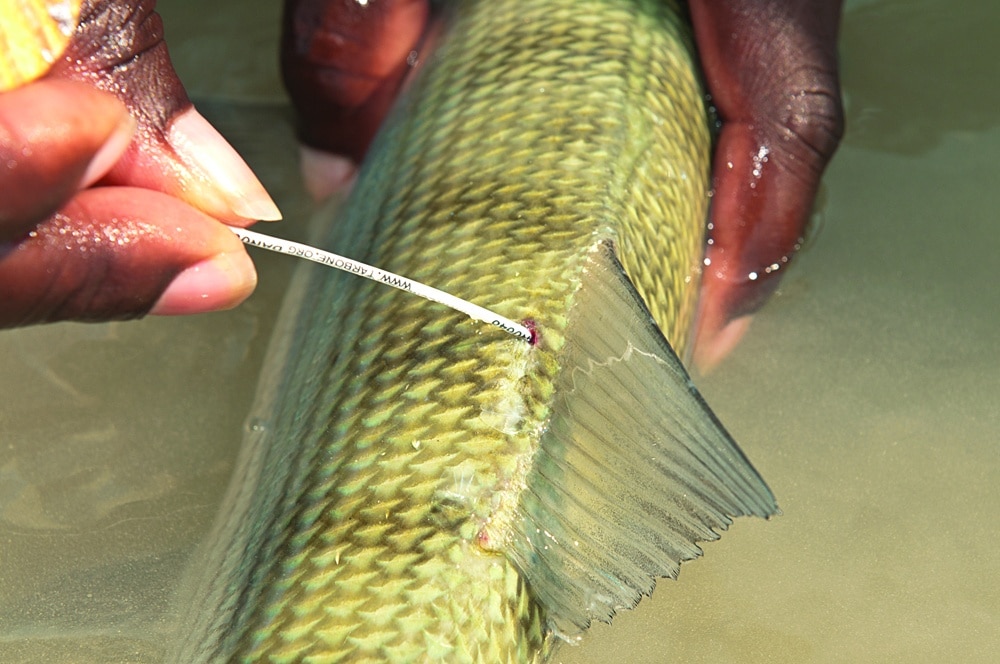
Bonefishing the Marls of Abaco
Abaco Lodge guides have been working with the Bonefish & Tarpon Trust in a tagging project that will help the organization gain valuable information about our favorite fly-rod fish.









